DIY Installation of a Plate Heat Exchanger on a Hot Water Tank
Posted by SEBASTIAN ZOTA
This is another episode of Alternative Heating & Supplies' tips and in this blog post, we are going to talk about how to install a plate exchanger on top of a domestic hot water tank. Learn why plate heat exchangers are important, how are they used and how to install them to heat your house.
How are Plate Heat Exchangers Used
A plate heat exchanger is used to extract the heat from the wood furnace to distribute it throughout the house.
What if there were a way to heat your home, give you all the hot water you need for baths, showers, laundry, heating your pool, spa, and anything else you wanted to keep warm with a truly efficient and renewable resource? What if you could help the environment while you were heating your home? What if you could do all this for FREE?
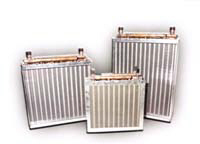
Water to Air Heat Exchanger
It sounds too good to be true, but there is a resource that fits all of these specifications. Look no further than right in your backyard or down the road. Wood.
Many people will reply, “But that’s old-fashioned and inefficient. Hey, and it’s a lot of work. And it’s dirty too!”
This is no necessarily the case as wood heating has come of age. The modern exterior wood furnace takes advantage of the latest developments in heating technology. Set up outside your home, and using water and plate heat exchangers, your furnace will burn cleanly and efficiently. In most cases, it can be connected to your existing system to distribute the heat.
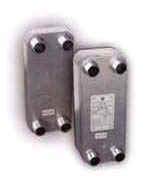
Water to Water Plate Heat Exchanger
Since all your fuel is kept outside, you won’t have the mess associated with indoor stoves. The unit will burn all sizes and types of wood. Yes, even those knotty pieces. The best part is you only have to feed it once or twice a day – even in the coldest weather. Load it up in the morning and evening, and the unit will do the rest. Water heated to 185 to 200 degrees surrounds the firebox, then it courses through tubing to your home where heat exchangers convert it to hot air which is dispersed by your existing system.
Coal, gas, and oil are fossil-based, non-renewable resources, and in the last year the costs for these commodities have soared. Electricity prices are also climbing.
The environmental impact of these fuels is also a factor that must be considered. The methods used to extract fossil fuels are damaging. Home systems, unless they are constantly and professionally maintained, are not efficient burners. Electricity is often produced by coal-fueled plants or by hydroelectric dams that affect our fragile ecosystems.
There is no other source of warming your home that gives you all the advantages of a timber-fueled system. It’s environmentally friendly, cost-effective, and efficient. With a little extra work, you can reap the benefits. This is an energy source that grows virtually everywhere. Properties are constantly being cleared and the leavings are perfect for your use. Haul it home and you and your family are warm all winter for the cost of a tank of gas.
Alternative Heating & Supplies prides itself on bringing you the latest innovations in this technology, along with full-service parts and accessories. We have years of experience and can advise you on choosing the right equipment for your home.
So what are you waiting for? Contact us now!
Plate Heat Exchanger Installation Tips
What Size Should the Plate Exchanger Have?
Many customers ask, “how do you know what size plate exchanger to install in your domestic hot water tank?” A simple rule of thumb is 2 to 3 people in one house will determine a 10 plate. A 10 plate heat exchange is enough for 2 and 3 people. When you get into a full sized family, anywhere from 4, 5, 6 people in the house; we immediately recommend the 20 plate. It will have plenty of power, and it will have great regenerative nature to it, so it'll heat up the domestic hot water a lot faster.
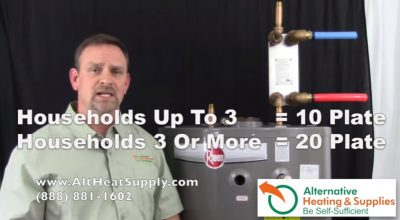
Plate Heat Exchangers
This is the cold-water side, so cold-water coming in. As you can see, the plate heat exchangers are installed.
Plate Heat Exchanger Installation and Assembly
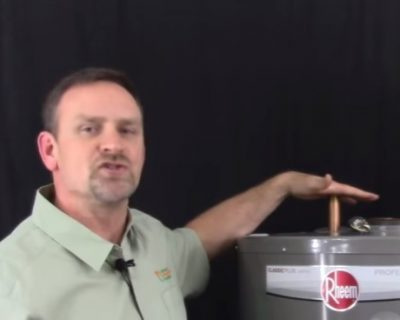
The Hot Water Side of the Plate Heat Exchanger
This is your hot water side. So you're going to mount your plate heat exchanger on the cold water side, and we'll explain to you why. It's actually quite simple, we call it a thermal pressure siphon. We will explain in detail in a minute.
All you're going to do is the water line will come in and you're going to cut it, and then you're going to mount it. You're going to do a 90 here going into the plate exchanger and we always recommend unions. Now you have to use a lead-free, copper, and or brass union. In this case, we lead-free brass.
Ideally, you will be putting a union here, and then you come down in through the plate exchanger, and then, another lead-free union and then back into the into the domestic hot water tank.
These plate exchangers are stainless steel, the plate exchangers that Alternative Heating & Supplies sells are also 40% heavier than the plate exchangers that also are out there on the market.
The Plate Heat Exchangers Use and Applications
The plate exchangers can be used for many different applications, anything from cooling or heating and warming up diesel to exchanging heat between polyurethane and a refrigerant. However, the heat exchangers that we have made is created specifically for the wood boiler application. Essentially, it's a much heavier grade of plate exchanger, which hurts the efficiency a little bit but has the longevity and the quality instead of having to replace it every 4 or 5 years. We went with a heavier grade and they will last you the lifetime of the boiler, if not longer.
How Does a Plate Exchanger Work?
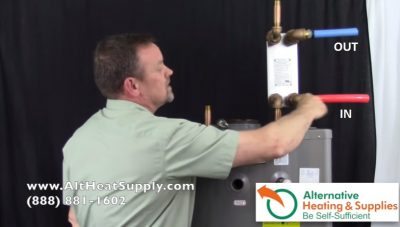
Plate Exchanger Flow
In this case, the water flow is going to be coming in from the domestic hot water side this way into it. The flow of the wood boiler is going to go the opposite direction. You're trying to create a cross flow difference which means you will get more heat exchange. The boiler coming in, identified with the red pipe, is going to come in through the bottom, up the flow, and then out and return to the boiler or to your next heating system. What will happen here is the reason and how this works is the thermal pressure siphon.
What happens here is this water coming in from the boiler is anywhere in the ballpark of 170 to 180 degrees. It's heating up the water in this plate exchanger which is coming in at roughly 55 degrees, give or take a couple degrees depending on what zip code you're from. The water in here is getting hotter and hotter and hotter. It's building up pressure because when water is heated, it expands and of course, being in this pipe, it's building pressure because this tank is also pressurized. That's how it gets water to your tap.
The water in here is getting hotter and hotter and the pressure's building. The tank, the water in there is naturally cooling, that's why it's covered with so much insulation. So the pressure in this is dropping. So the pressure between this and the water jacket in here and the water in here, the two pressures are going to neutralize. When you have that natural neutralization, the water temperature equals out. That's how the thermal pressure siphon works.
Once again, the water in here heats up, builds up the pressure, the water in here is slowly but surely cooling. Those two will neutralize at the same PSI or pressure, which is about the same temperature. You're going to get this tank at about 130 degrees with again, no pump, and no circulation. It's going to use the thermal pressure siphon to do it if it's installed correctly.
Plate Heat Exchangers Installation Recommendations

Plate Exchangers Recommendations
The most important thing is that you need to make sure you're using a good grade copper on the domestic hot water side or a lead-free brass. You have got to use these grade of metal because this is water that's now entering your domestic hot water system. Meaning you could possibly be drinking the water, and you'll be bathing in it as well. Please make sure you have good quality brass or copper.
Plate Exchangers Installation FAQs
Another common question that we get a lot is do you heat the domestic hot water first or do you heat the boiler first or the hot air furnace first?
The answer is you're always going to go with the domestic hot water first. The reason why is if you're taking a shower and you get a couple of degrees difference in your shower, you're going to know immediately. Make sure you go with the domestic hot water first.
When you go to your boiler after this, if the temperature of the house is off a degree you won't even notice in the hot air system. Once you're done with the shower and you're taking a lot of heat from the loop, from the wood boiler or any traditional coal boiler or any other boiler system, it will catch up and get the hot air system.
Installation Summary
Let’s briefly review what we discussed. So, the water coming in from the wood boiler, coal furnace, boiler, any kind of boiler system you have with alternative energy or any boiler, you're going to come in and hit the domestic hot water first.
Then from there, you're going to come out to your boiler, your hot air furnace, or any other conventional heating system that you have and then back to your wood, coal, or alternative energy boiler. That’s really all you have to do, that's how simple these plate heat exchangers are to install.
The nice thing is when they're not being used, the water will just flow right through your plate exchanger into your domestic hot water tank and the tank will work as it was before it was installed. There's nothing more you need to do.
The plate exchanger will actually heat up the tank a little bit warmer than the tank is set for. So what will happen is the tank will never really turn on its coil system. The hot water tank will only turn on its coil system once you stop using your wood boiler. And that applies if your boiler is at about 180 degrees. If you're running your boiler a little cooler than that, the coils inside this might be turned on.
If you have any suggestions or areas that you don't understand or a section where you'd like to see a video on, give us a call, we'd love to hear your suggestions.
